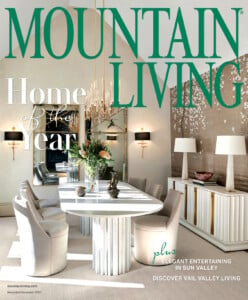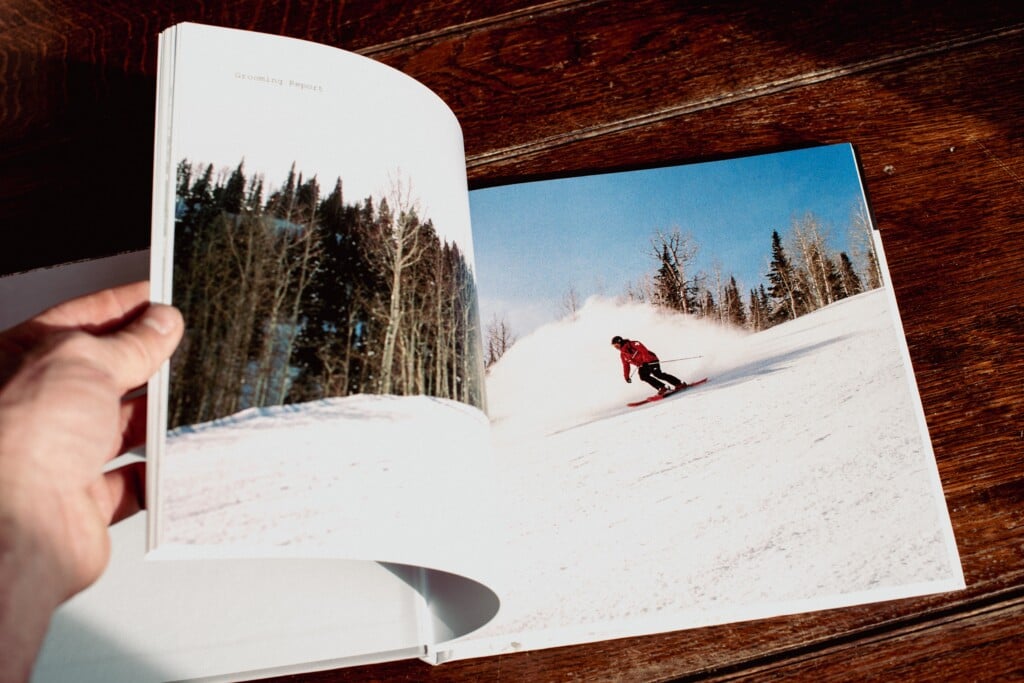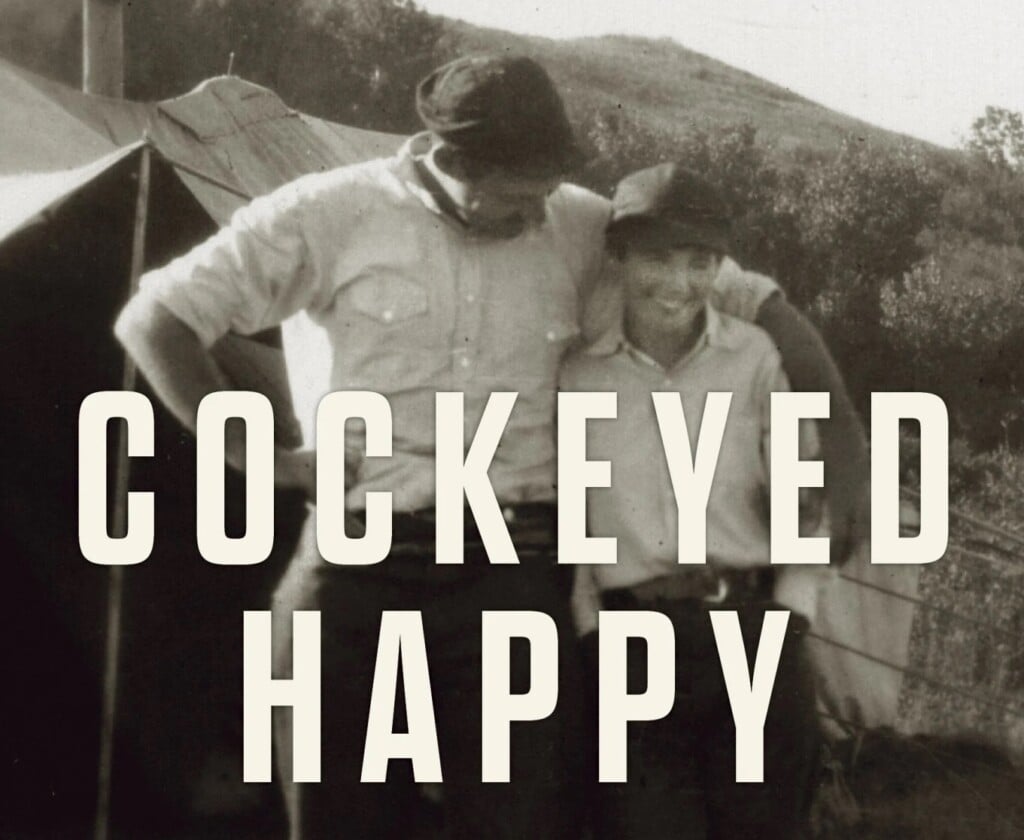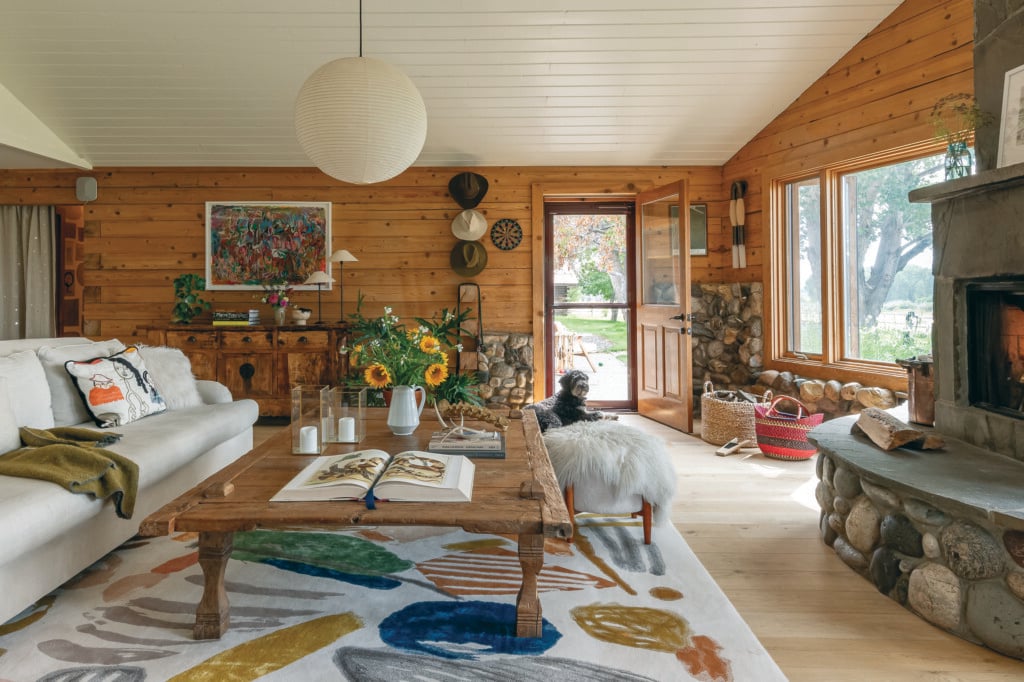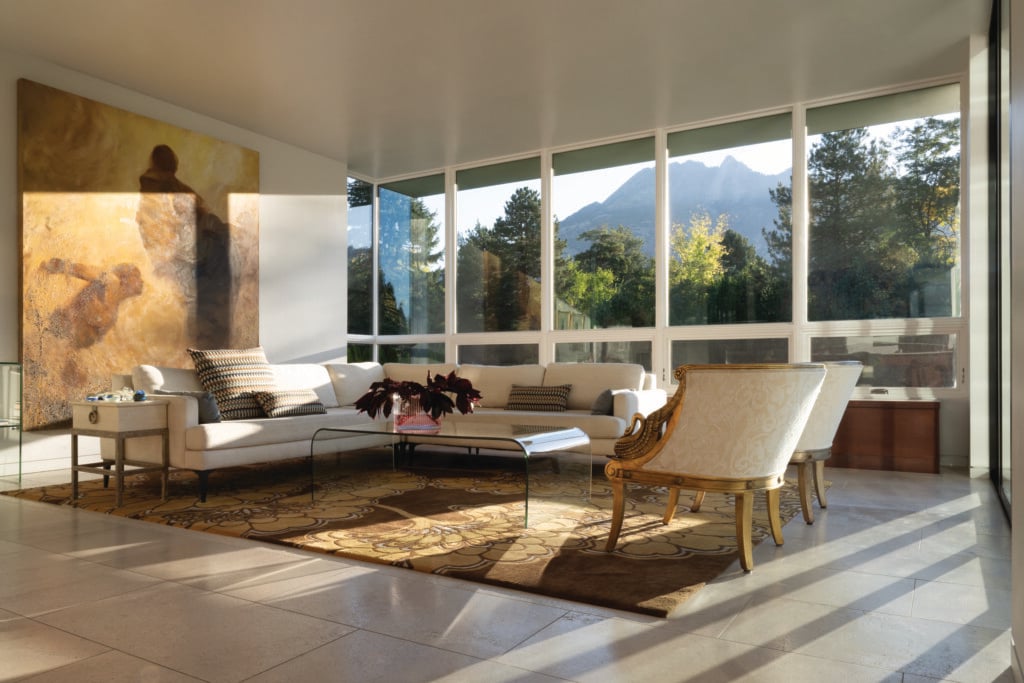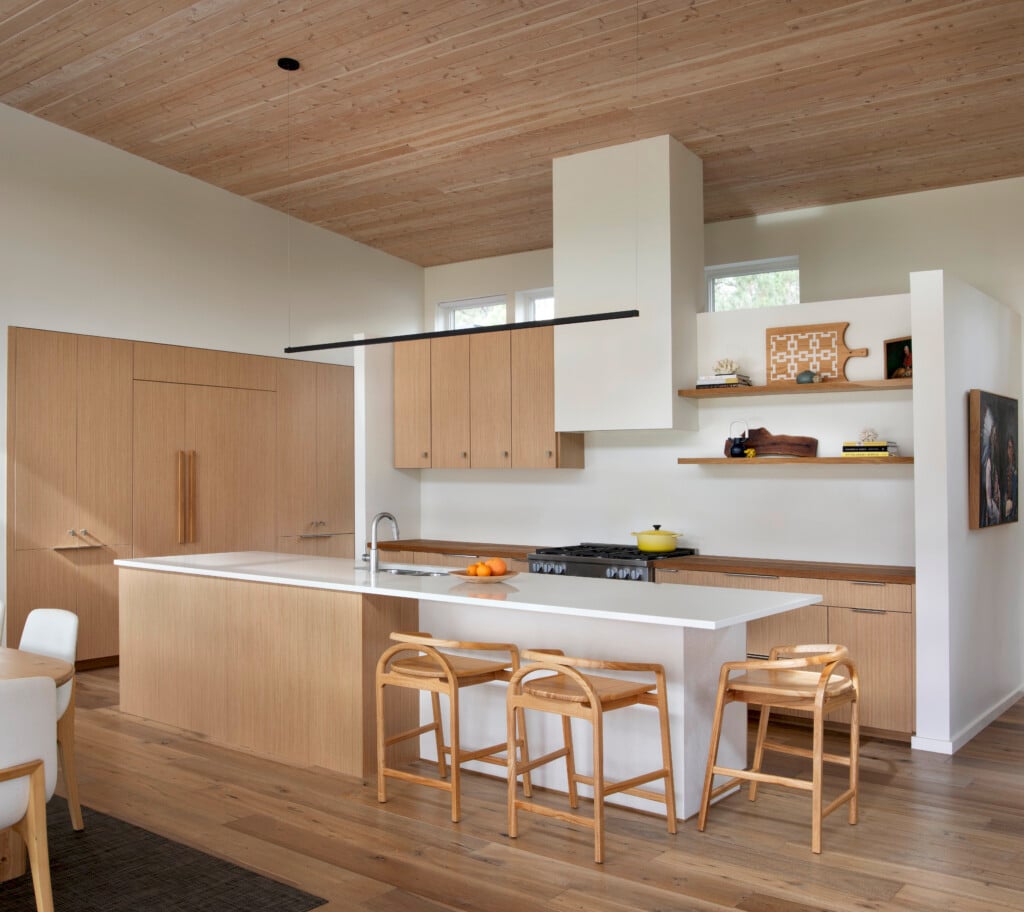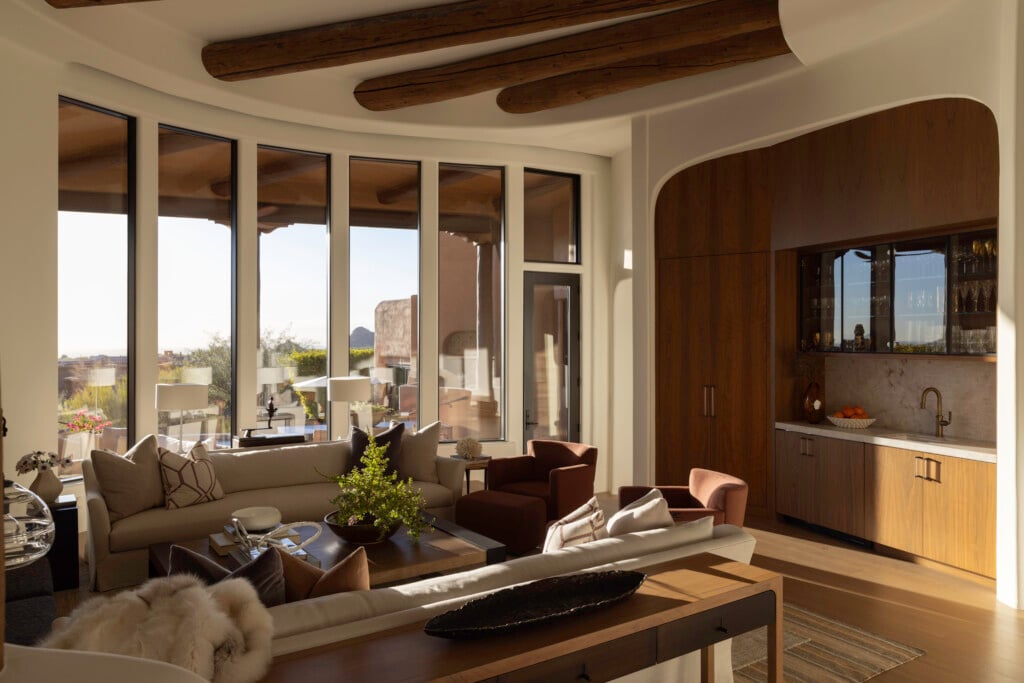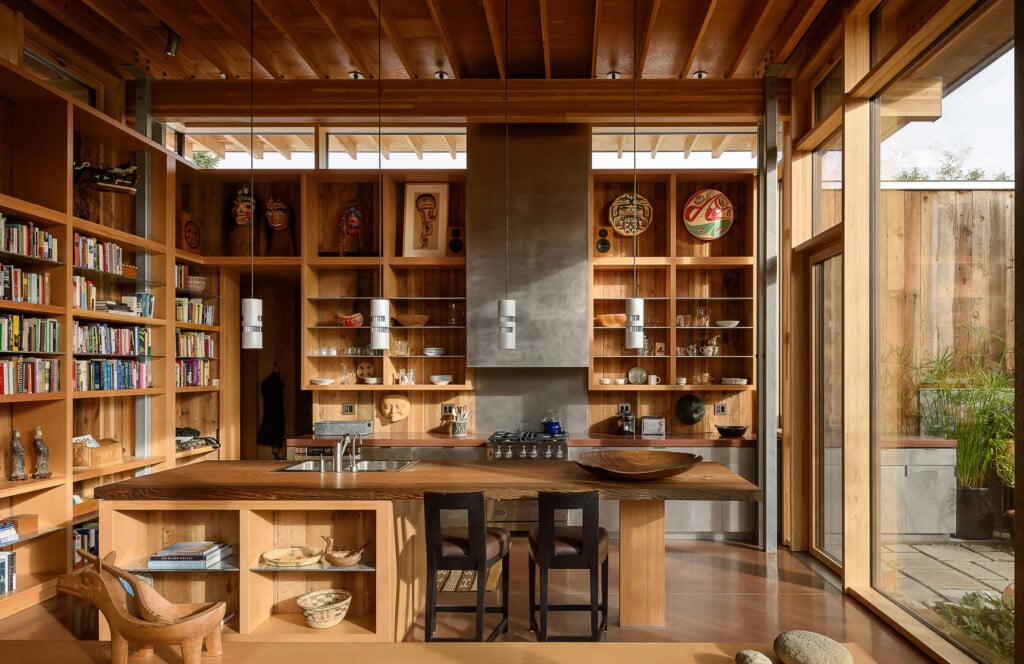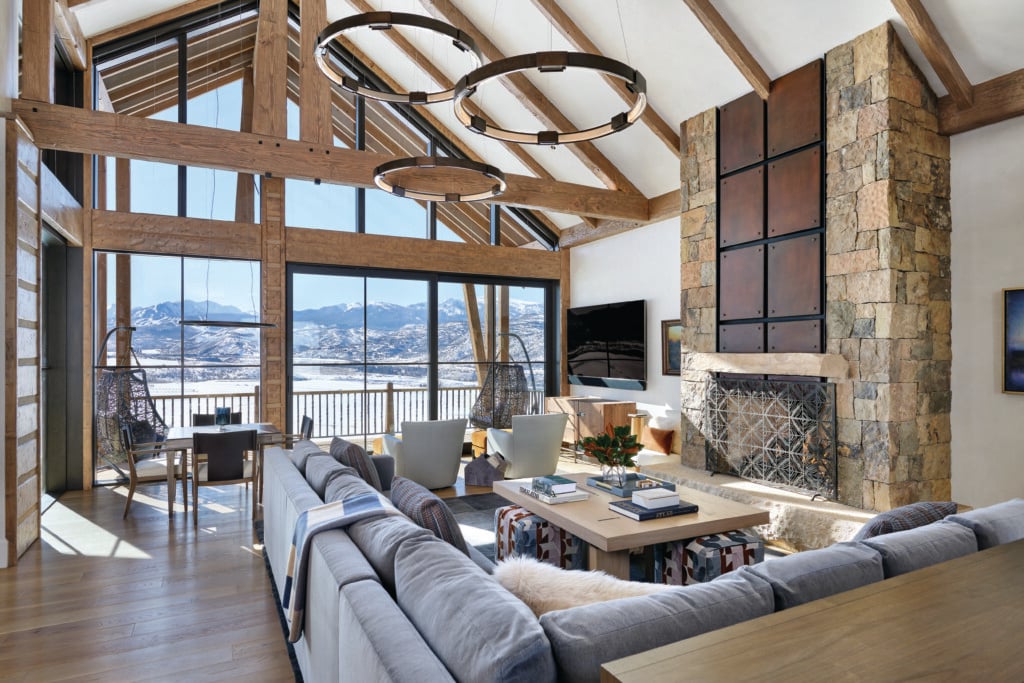Mountain Modern Homes Redefine Western Living
A new book celebrates contemporary style and regional authenticity at home in the West.
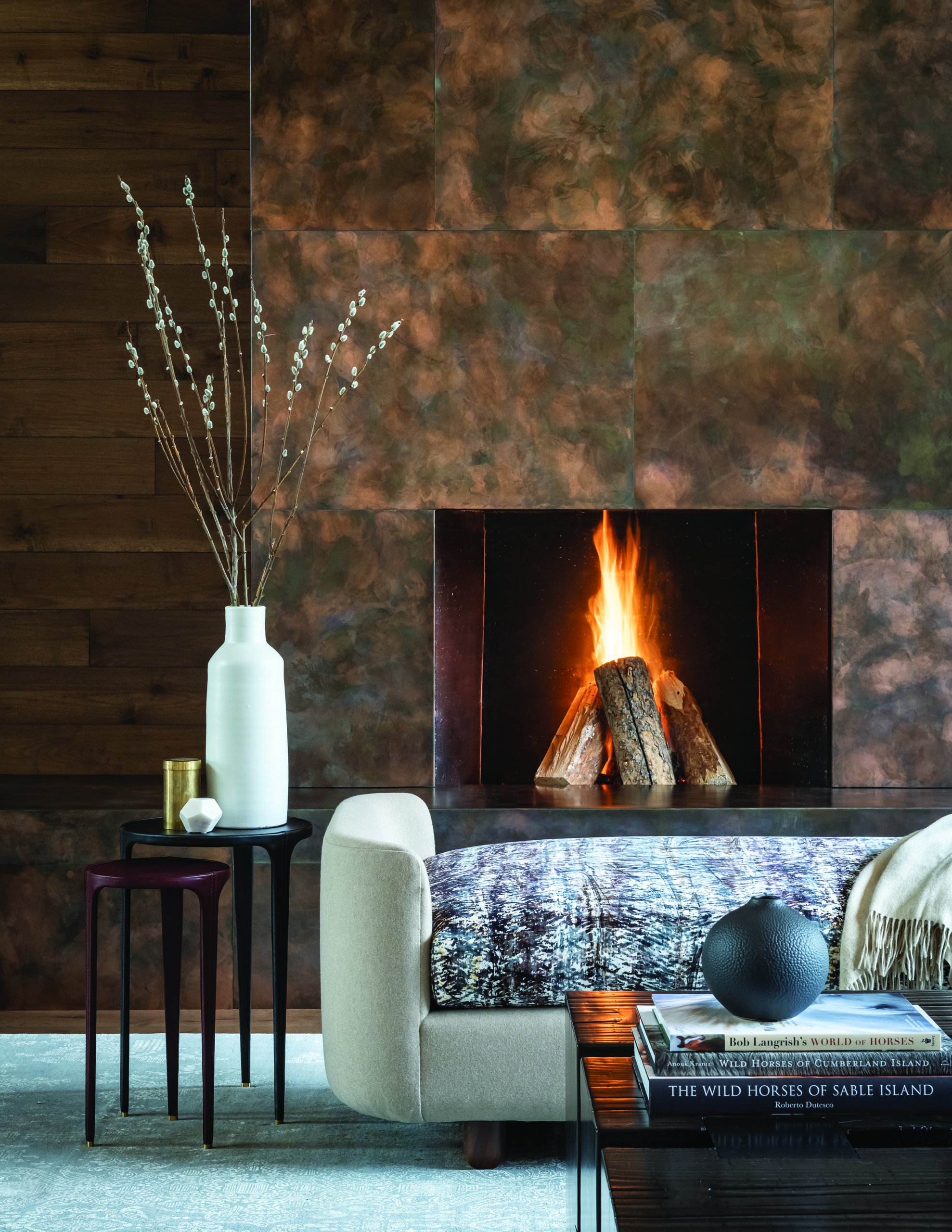
Mimi London’s Three Timber coffee table, a Belgard daybed from Dmitriy & Co. and Wisp nesting tables from OCHRE are backed by the warm glow of a custom copper-paneled fireplace surround in this Jackson Hole, Wyoming, home. | Photo: Audrey Hall
The American West is a geographic location—thick forests of pine and aspen, snowy mountains, alpine lakes and sweeping vistas. But there is also the almost-mythical version of the American West—a vision of wide-open spaces where the “call of the wild” has resonated for centuries. This passion for living in the West is as strong as ever.
As writer Chase Reynolds Ewald and photographer Audrey Hall researched Modern West, their newest book, they noticed something interesting. “The nature of the ‘Western dream’ is different than it was even 20 years ago,” says Hall. “We are seeing a shift not only in the architecture and design of modern Western homes but also in the people who are building and living in them.”
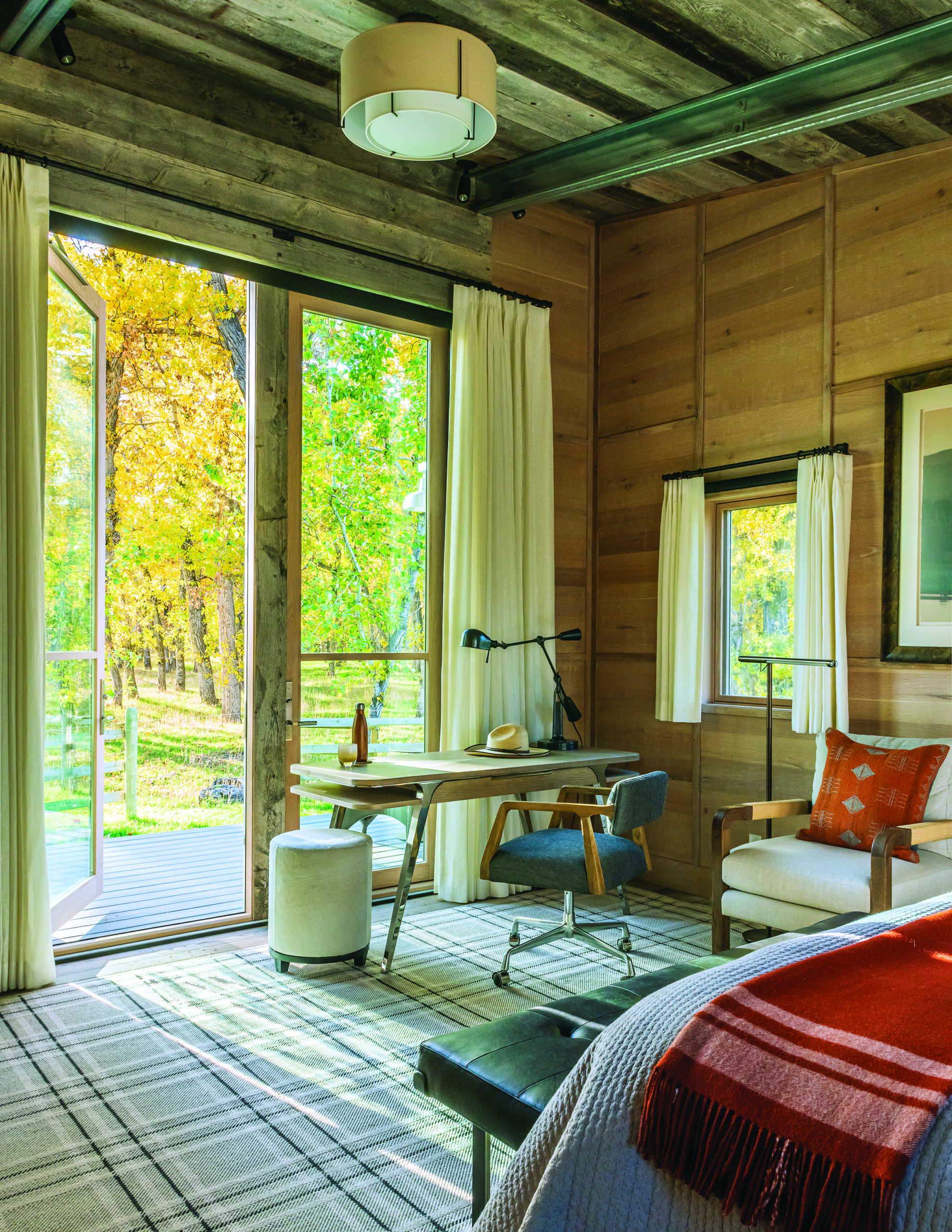
In this Montana ranch-cabin bedroom, WRJ Design embraced the challenge of designing and sourcing rugged, timeless furnishings—functional and comfortable—that would stand up to heavy use. | Photo: Audrey Hall
Most are not wanting a home merely for holidays and vacations. Instead, they are embracing modern materials and incorporating high-tech systems that allow them to work from home—full time or most of the time. The shift was accelerated, in part, by the recent pandemic, which demonstrated that remote work was possible from nearly anywhere in the world.
Ewald and Hall have collaborated on seven Western design and lifestyle books over the past three decades, including American Rustic, Cabin Style and Rustic Modern (all published by Gibbs Smith). Their new book features 15 homes worth celebrating—from an uber-modern home with enormous views in the Yellowstone Club to a rescued-and-converted grain elevator to a modernist take on a classic Santa Fe adobe.
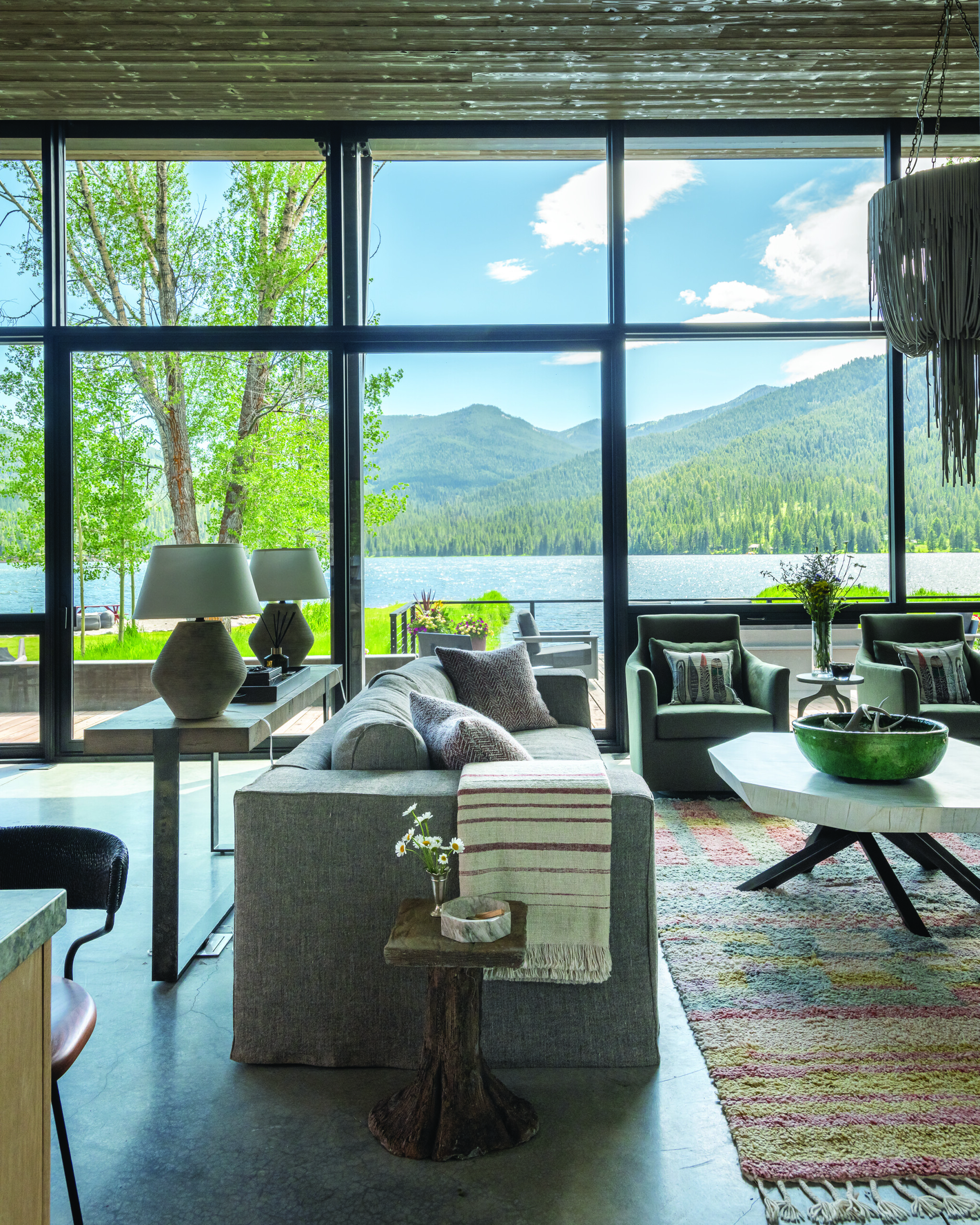
“A good lake house always has a connection to the water and to the lawn activities,” says architect Greg Matthews of this Greg Matthews Studio-designed home on Hebgen Lake in Montana. | Photo: Audrey Hall
“This book is a curated collection of the best examples of what we’re seeing out there,” says Ewald. The homes embody a strong sense of place—using local stone, wood and regional materials as well as handcrafted metalwork and furniture by local makers. “And each home reflects the owner’s unique way of living in the modern world,” she adds.
In the introduction to Modern West, she and Hall observe: “While mountain modern is an overused phrase, it remains useful in capturing a style defined by contemporary sensibilities and regional authenticity in both form and material.” They go on to say that “the best work achieves a careful balance between ruggedness and refinement, between scale and subtlety, and between tradition and innovation.”
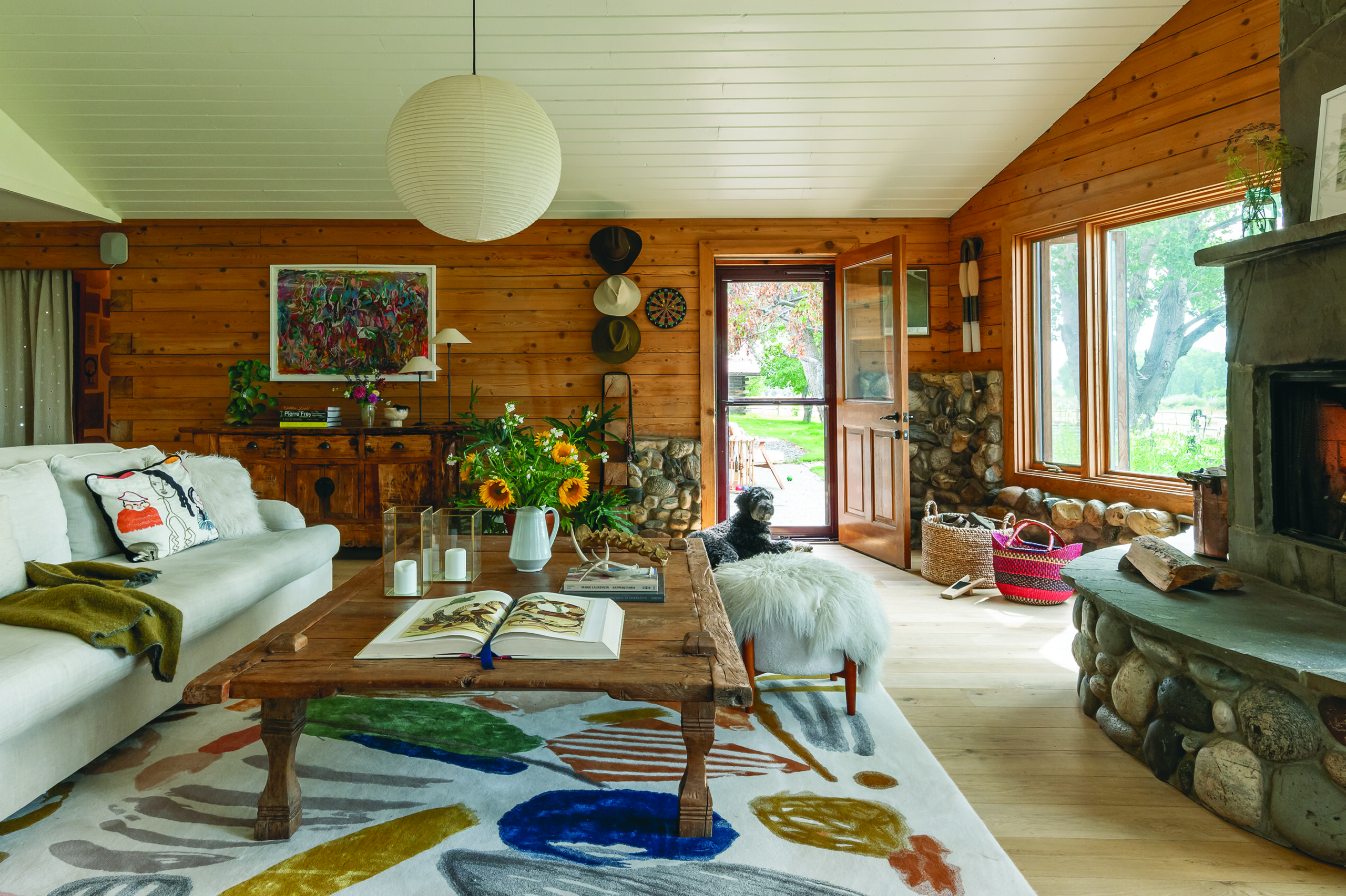
Fiona West’s living room in her Montana log home combines vintage cowboy hats, an Apparatus lighting fixture and a coffee table crafted from a vintage Indonesian bed. The Pierre Frey rug provides color and energy. | Photo: Audrey Hall
A chapter titled “French Bohemia” features the home of Fiona Louppe West, president of iconic French fabric brand Pierre Frey. She visited Jackson Hole, Wyoming, as a teenager, was smitten with the American West and always wanted to return. During the pandemic, she enrolled her son in a Montana school, and they never left.
Her work takes her to top global design centers, but her real life is in the West, where her log home is furnished with a blend of antiques, family heirlooms and, of course, Pierre Frey fabrics and rugs. “She did an incredible job of balancing a Western renovation while also honoring her French roots,” says Hall. “And I think it is remarkable that the president of an international brand like Pierre Frey can live in Montana.”
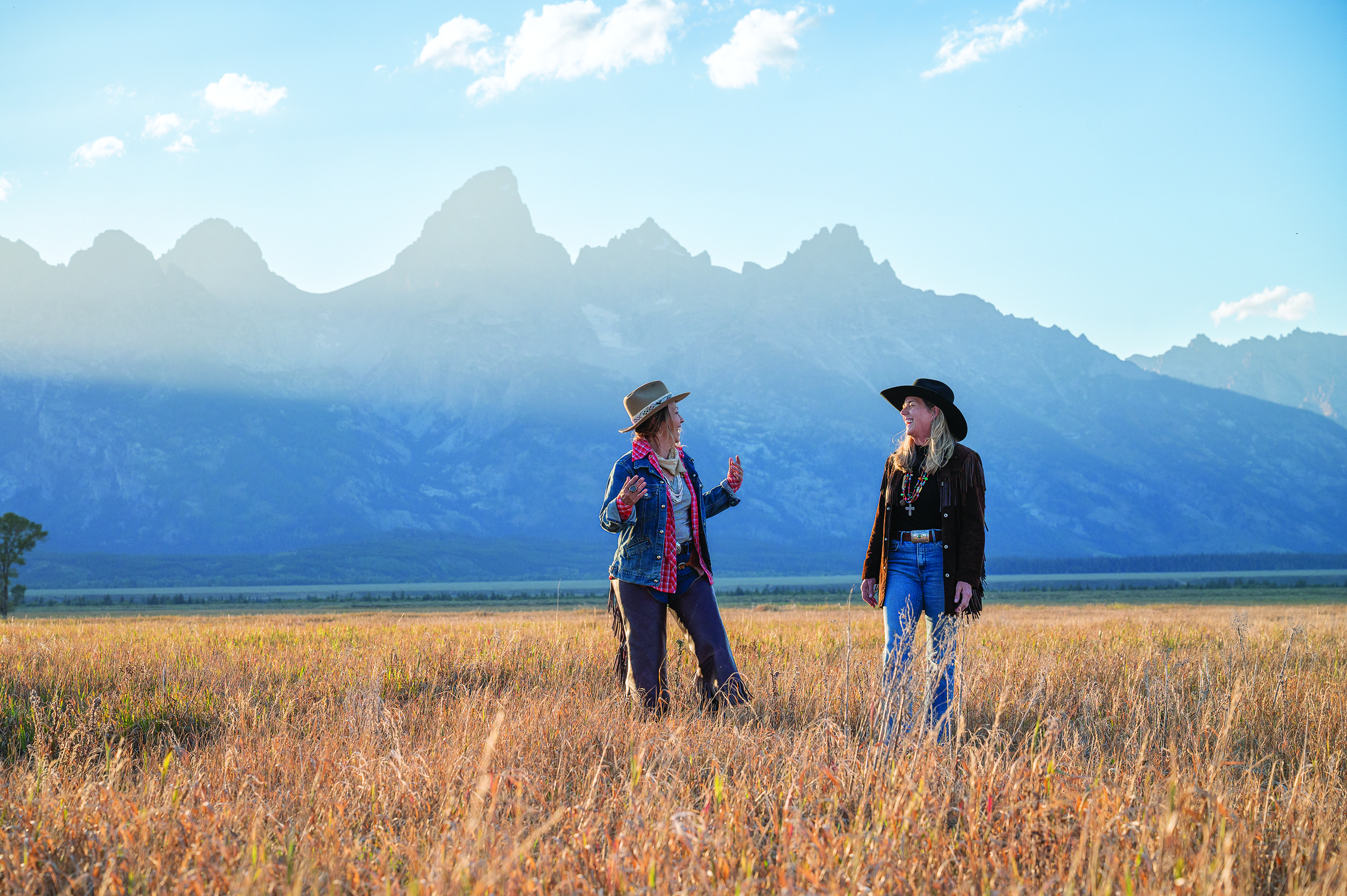
Photographer Audrey Hall and author Chase Reynolds Ewald pose with the Tetons as background. “We love working together with the great American West as our office,” says Hall. | Photo: Lisa Flood
Another chapter, titled “Saving a Seminal Icon,” peeks inside fashion designer Lindsey Thornburg’s home in a renovated granary in Livingston, Montana. Thornburg has deep roots in the American West but left to pursue a career in fashion design—most recently collaborating with heritage manufacturer Pendleton Woolen Mills to create warm and chic outerwear. Able to work remotely, she returned to Montana but wanted to live in a city. Livingston—small and historic—fit the bill. Her home is one of 17 units in 100-year-old Yellowstone Granary, the tallest building in town. She calls it a “rural cathedral.”
Ewald and Hall note that while the contemporary homes featured in this book vary widely by size and style, they are united by their profound respect for the land, a pursuit of authenticity and an understanding that a home in the West is not just about where you live but how you choose to live your life.
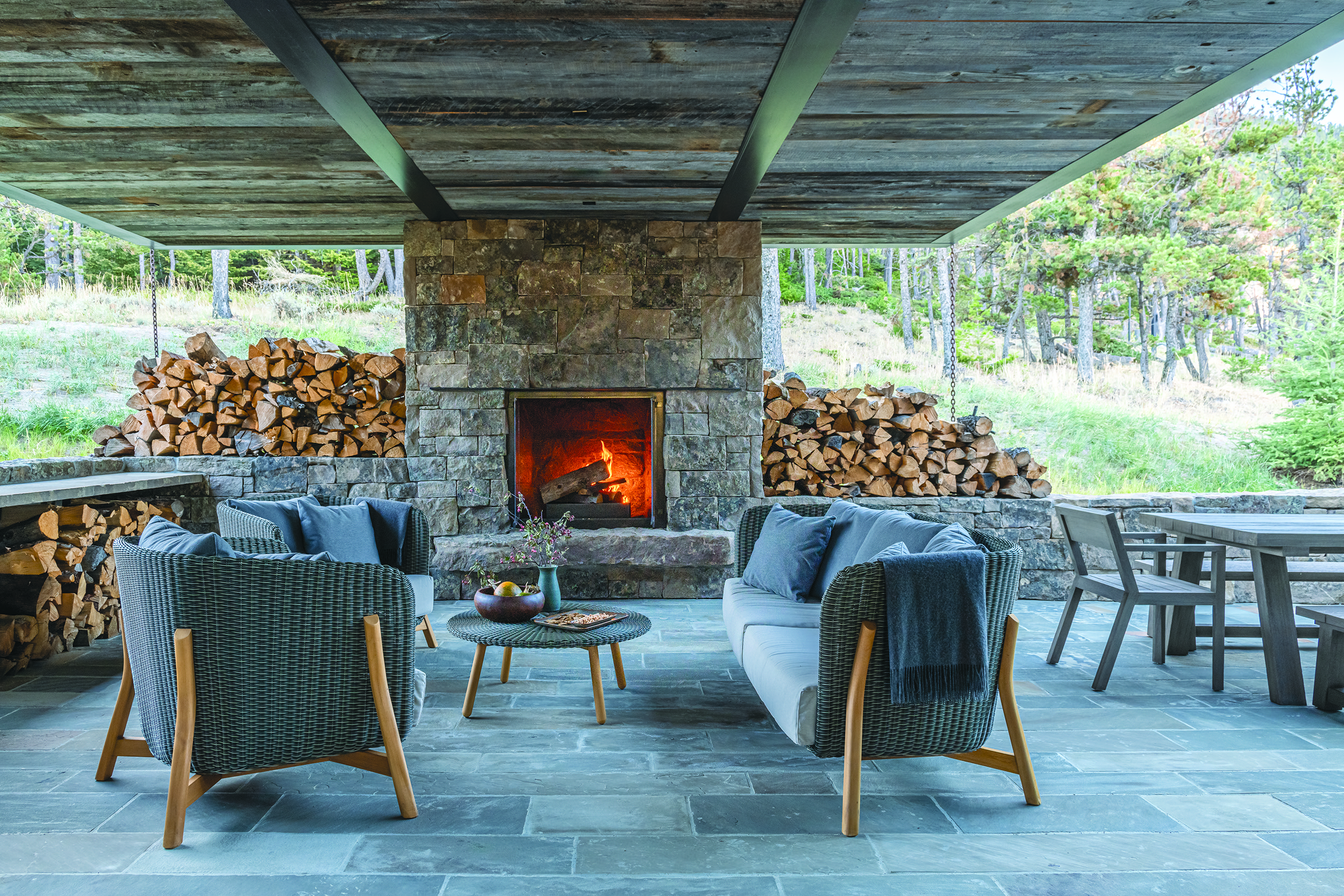
This sheltered outdoor dining area in this Red Lodge, Montana, home is cleverly tucked between the house and a forested hillside. Furniture from Home Infatuation. | Photo: Audrey Hall
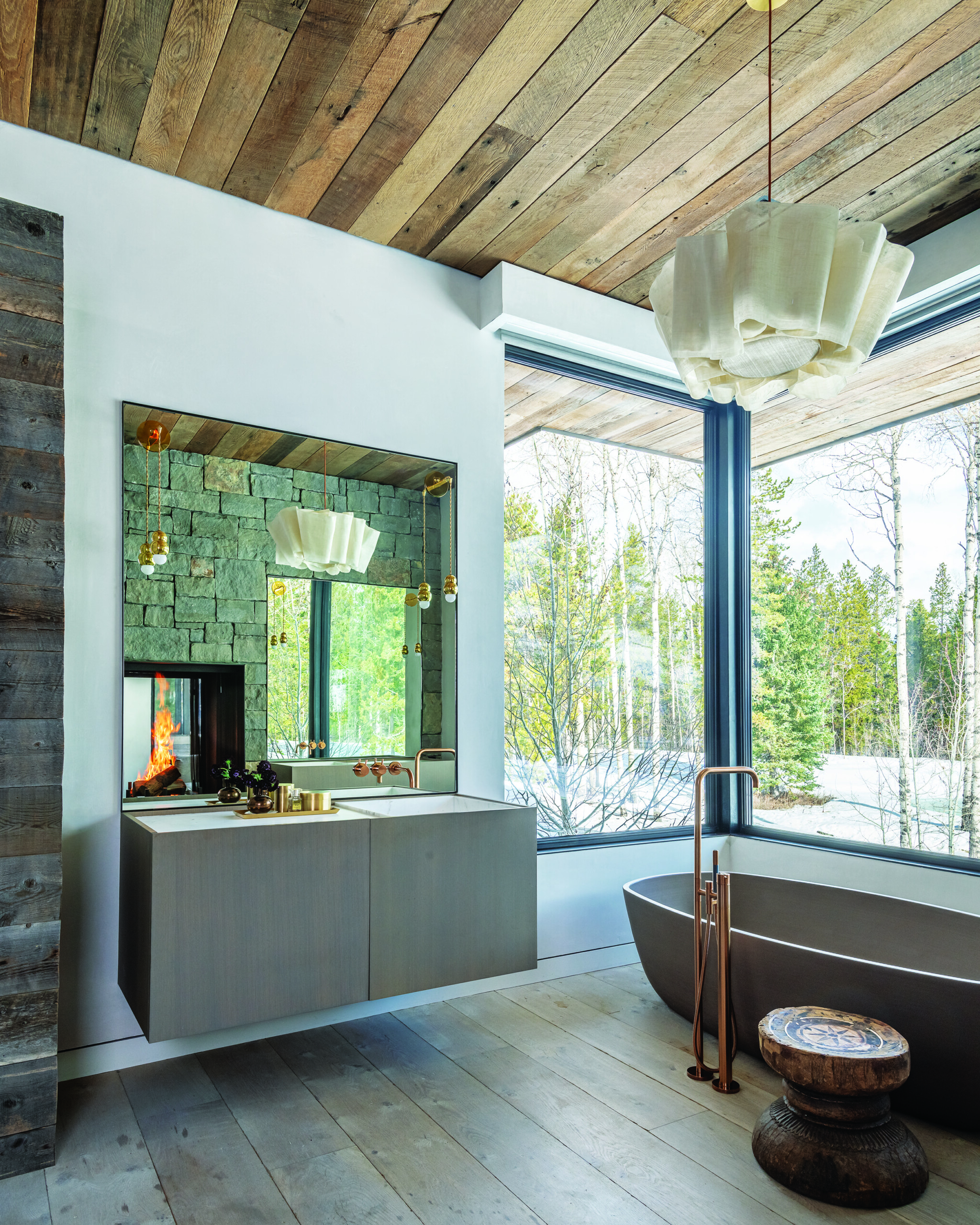
Reclaimed boards, reclaimed white oak, natural patinaed steel, limestone veneer and board-formed concrete give this Jackson Hole, Wyoming, primary bath a consistent palette throughout. | Photo: Audrey Hall
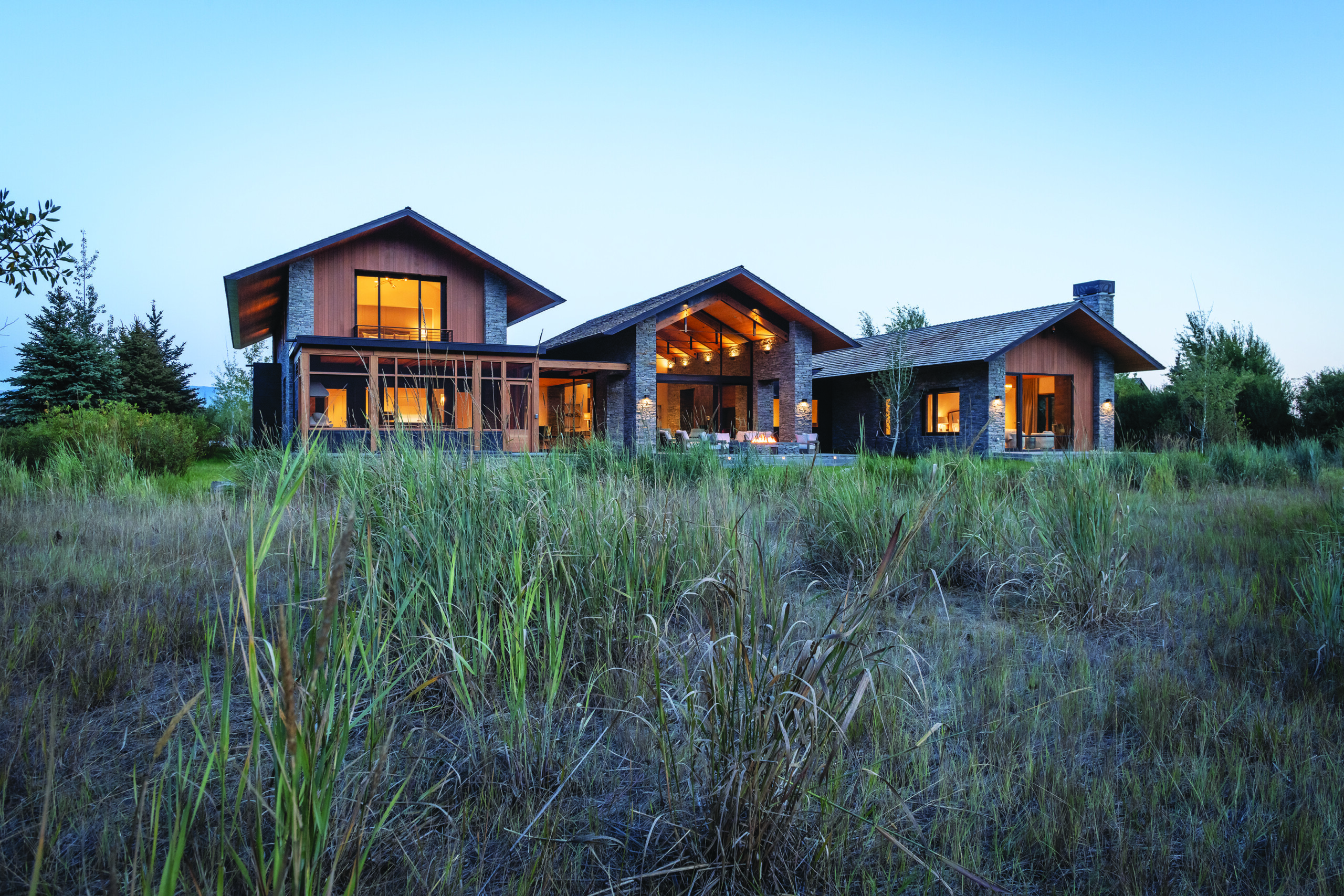
Built of stained cedar, charcoal quartzite and patinaed copper with a shingle roof, this Jackson Hole, Wyoming, home presents as three gabled forms, surrounded by low stacked-stone walls and planters with aspens. Roofs constructed with cross-laminated timbers allow large overhangs (up to seven feet) in both directions. | Photo: Fiona West’s living room in her Montana log home combines vintage cowboy hats, an Apparatus lighting fixture and a coffee table crafted from a vintage Indonesian bed. The Pierre Frey rug provides color and energy. | Photo: Audrey Hall
